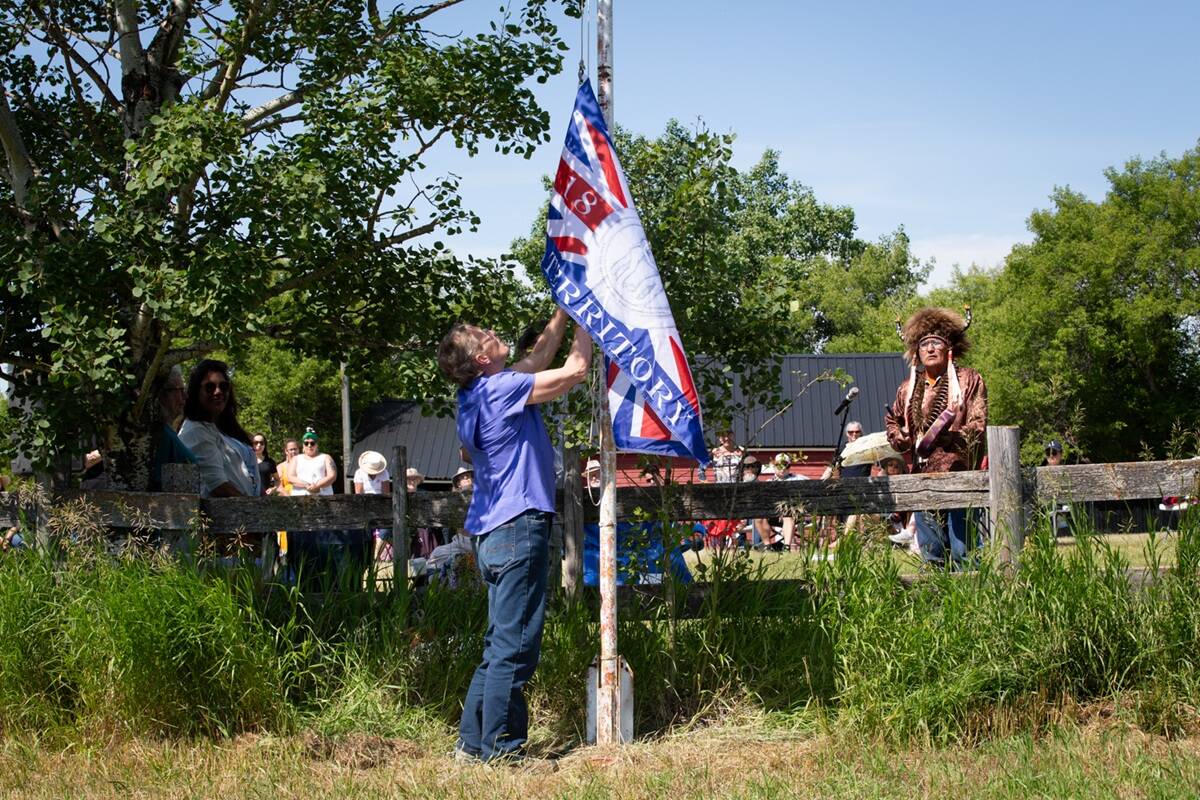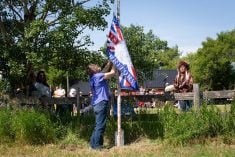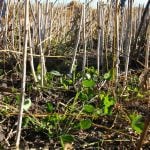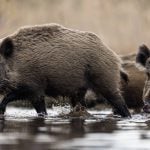The Manitoba Zero Till Research Association (MZTRA) has taken the initiative to set up an annual forage trial to evaluate the potential of sowing seed blends in an annual crop rotation to improve soil health and provide a grazing option to give summer pastures a rest. It’s one treatment for the benefit of two systems, says MZTRA livestock and forage co-ordinator Andrew Kopeechuk,
He attended a field day at Gabe Brown’s ranch near Bismarck, North Dakota, to learn more about the crop cocktail concept before setting up the 2008 demo trial. Sowing cover crops to control erosion and provide livestock feed is a common practice in North Dakota. Brown, a committed zero tiller since 1994, began testing the cocktail idea in the 1990s as a way to cut fertilizer costs.
Read Also

Treaty Land Sharing Network expands reach in Saskatchewan and Alberta
The Treaty Land Sharing Network, which connects land holders with First Nations and Metis people, has expanded since it began in 2018
Kopeechuk’s recipes for the annual forage blends for the trial include certain species for certain reasons. He considers root type (tap or fibrous), nutrient suppliers (nitrogen fixers and low-energy input requirements), productivity under various climatic conditions (warm-season and cool-season plants), plant type (grass and legume), competitiveness (for weed control), economics (input cost), as well as the availability of seed. He also considers the nutrient requirements of the livestock to come up with palatable and balanced blends that will increase or at least maintain the rate of gain.
Blends can be simple or complex, he adds. The main consideration is that the blend includes varieties of crops that grow well in your area and it serves your purpose at a price that’s within your budget.
In the demo year, he used four blends of five or six species. Each of the blends was sown on each of four plots in a five-acre area at MZTRA research farm north of Brandon. The initial plan was to sow the plot early enough so that it could be grazed midsummer. Due to the late spring, seeding was delayed until June 17 and the plots were swathed on August 19 for swath grazing. He calculated that the five-acre plot would have provided about 30 days of grazing for the 26 steers. The steers were removed after nine days because the producer wanted them back to take advantage of a jump in market prices.
Grab samples taken before swathing and at weekly intervals were analyzed for yield and feed quality. Kopeechuk also observed the steers’ preference for each of the blends as well as the regrowth.
He noted that the blends that were the least expensive and contained varieties that grow and regrow well in the Brandon area weren’t the steers’ first choice. Those mixes included German millet, oats or barley, and forage peas as the main ingredients, with a bit of forage turnip in the mix. Turnip is from the brassica family, which has good protein and energy for the cattle and big, pulpy roots to promote soil health, he adds.
The blend favoured by the steers was the most expensive blend of corn, annual ryegrass, hairy vetch, forage turnip, peas and red clover. The yield was comparable to that of the cheapest blend, however, the regrowth was rated higher. The cost of the blends ranged from $22 per acre to $77 per acre.
2009 TRIAL
Kopeechuk designed the 2009 trial with six seed blends, each containing six to 11 species. MZTRA hopes to be able to carry on with this formal trial for two more years.
The total plot size was cut down to two acres, divided crosswise into three equal blocks, then cross divided into six strips to create 18 plots. The blends were sown in random order across each block.
They used a plot air seeder to sow the blends directly into the stubble from the 2008 trial. He notes that there was a bit of separation of the small seeds and large seeds in the tank. To avoid seed separation worries when sowing large areas, he suggests splitting the small seeds and large seeds into two tank compartments. Weed control was limited to a pre-emergent application of glyphosate a few days after seeding.
The two acres of forage blends provided 14 days of grazing for 34 steers. Access was controlled with an electric wire running across the six strips so that the steers always had access to an equal amount of each blend.
Kopeechuk says the steers didn’t seem to show a preference for any particular blend. He did switch from the rough-awned barley variety used in the demo year to a forage
barley variety in 2009, which made a difference in the palatability of the mixes that included barley. The higher stocking density may have increased competition for the forage.
His visual assessment of the regrowth was that blends three, five and six — basically, those with hairy vetch in the mix — showed good regrowth, while blends one, two, and four, had the poorest regrowth.
Baseline soil tests were taken in 2008. They will continue to take soil test to measure the increase in organic matter and soil nutrients over the period of the trial. The steers were weighed in and out of the trial as well. There were no significant changes in weight gains or losses.
Three samples were taken from each of the 18 plots for forage quantity and quality analysis. The results shown below are the averages of the three samples. The bracketed number is the seeding rate in pounds per acre.
BLEND 1
Oat (20), Millet (8), Forage Peas (20), Soybean (8), Clover (2), Radish (1), Turnip (1)
Cost: $25.14/acre Yield: 14,308 lbs./acre
Quality: CP% 6.8; ADF% 33.9; TDN% 61.2; RFV 104
BLEND 2 – Barley (20), Annual Ryegrass (5), Sudan Grass (6), Forage Pea (15), Soybean (10), Turnip (1), Radish (1)
Cost: $31.33/acre Yield: 9,430 lbs./acre
Quality: CP% 8.2; ADF% 31.0; TDN% 62.7; RFV 113
BLEND 3
Oat (20), Sudan Grass (8), Clover (2), Soybean (10), Hairy Vetch (10), Radish (2), Kale (1)
Cost: $68.77/acre Yield: 11,453 lbs./acre
Quality: CP% 9.5; ADF% 33.5; TDN% 61.4; RFV 108
BLEND 4
Oat (15), Barley (15), Millet (5), Forage Pea (20), Radish (1), Turnip (1)
Cost: $14.93/acre Yield: 13,748 lbs./acre
Quality: CP% 7.7; ADF% 32.0; TDN% 62.2; RFV 112
BLEND 5
Barley (20), Millet (5), Hairy Vetch (10), Forage Pea (20), Forage Canola (2), Kale (1), Turnip (2), Sunflower (1)
Cost: $58.90/acre Yield: 15,760 lbs./acre
Quality: CP% 9.8; ADF% 30.3; TDN% 63 RFV 121
BLEND 6 – Oat (20), Annual Ryegrass (5), Sudan Grass (5), Forage Pea (15), Hairy Vetch (10), Clover (2), and one pound of each of Forage Canola, Radish, Turnip, Sunflower, Kale
Cost: $64.56/acre
Quantity: 12,670 lbs./acre
Quality: CP% 10.8; ADF% 30.4; TDN% 63; RFV 124
Contact MZTRA, 204-725-3939, or Andrew at 204-573-9529.















